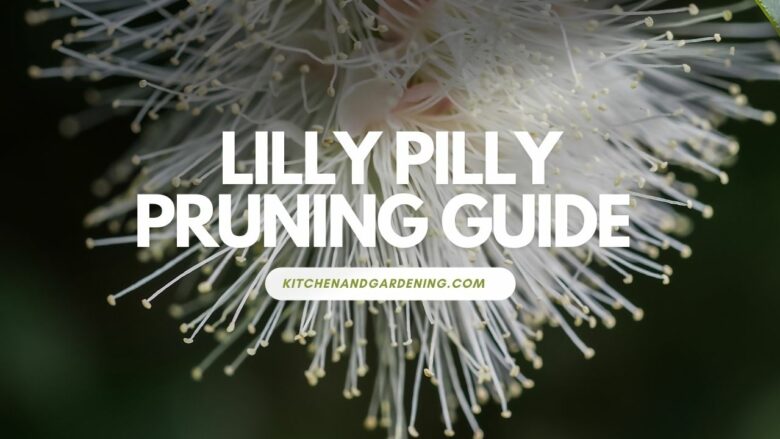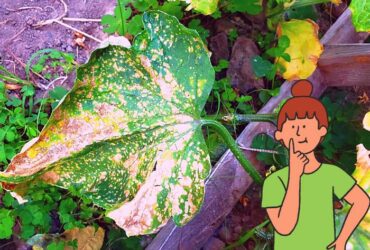Imagine stepping into a garden that exudes an air of mystery and allure, where lush greenery forms a living tapestry that captivates your senses.
Your eyes wander, searching for the source of this botanical wonder, and then you see it—the lilly pilly tree. Majestic and intriguing, it beckons you to unravel its secrets, inviting you on a journey of horticultural artistry.
In this article, we’ll dive into the art and science of shaping these botanical wonders, turning them into lush, dense green screens that offer privacy and aesthetic delight.
So, grab your gardening gloves, sharpen those shears, and let’s venture into the realm of the Lilly Pilly hedge, where beauty and technique intertwine.
Are you ready to unlock the secrets and unleash your inner hedge whisperer? Let’s dive in!
Lilly Pilly Plants- An Overview
These botanical wonders belong to the Myrtle family and are native to Down Under, Australia. They come in various species, each with distinctive characteristics and charm. From the elegant Syzygium australe to the flamboyant Syzygium paniculatum, Lilly Pilly plants offer a range of choices to suit your hedge preferences.
Types of Lilly Pilly species suitable for hedges
Now, let’s meet our hedge-worthy Lilly Pilly species! Not all Lilly Pilly plants are born hedge material. Some thrive in solo roles, while others are born to mingle and form dense hedges.
If you aim for a hedge that will leave your garden guests speechless, consider species like Syzygium australe (also known as Brush Cherry) or Syzygium paniculatum (the magnificent Magenta Lilly Pilly).
These species have a knack for growing closely together, creating a lush and eye-catching hedge that will make your neighbours green with envy.
Tools and Materials Needed

Pruning tools
Now, it’s time to arm ourselves with the mighty weapons of hedge shaping—the pruning tools! These trusty companions will help us sculpt our Lilly Pilly hedge into a thing of beauty.
Pruning shears
First, we have the pruning shears, the graceful dancers of the gardening world. With their sharp blades and ergonomic design, they’ll make precise cuts like a ballet dancer on stage.
Loppers
Next, we have the loppers, the heavyweight champions of branch trimming. With their long handles and powerful jaws, they’ll make short work of those stubborn branches that dare to challenge us.
Hedge trimmers
And finally, the hedge trimmers are the ultimate styling tools. With their electric or manual options, they’ll give your hedge that crisp, manicured look that will turn heads. So, gather your pruning arsenal and let’s trim with finesse!
Safety Equipment

Let’s talk safety because even hedge heroes need to protect themselves.
Gloves
Before you embark on your hedge-shaping adventure, don’t forget your trusty gardening armour. Slip on those gloves to keep your hands clean and shield them from thorns and prickly surprises.
Gardening Shoes
And let’s not forget about sturdy shoes! Your garden is a battlefield; you need footwear to handle the rugged terrain.
Safety Goggles
Oh, and one more thing—goggles! They’re not just for laboratory experiments; they’ll protect your eyes from twigs or debris that might decide to take a leap of faith. Safety first, my gardening comrades!
Timing and Frequency of Pruning
Best Time To Prune Lilly Pilly Hedges
The timing of lilly pilly pruning is crucial to ensure optimal growth and health. So, when is the best time to grab your pruning shears and work your magic? Well, it all depends on your garden’s specific species of lilly-pilly flowering.
For most lilly pilly varieties in Australia, the ideal time to prune lilly pilly is during the late winter or early spring. This period allows the hedge to recover and grow vigorously during the warmer months. Prune lilly pilly during this time as it promotes new growth and helps shape the hedge before it starts its active growth phase.
However, there are a few exceptions to this general rule. Some Lilly Pilly species, such as Syzygium australe, can be pruned at different times of the year, including summer or autumn. It’s essential to consult specific guidelines for your particular species in your garden, as each may have unique pruning requirements.
Remember, timing is everything when it comes to prune lily pilly. Avoid pruning your Lilly Pilly hedge during extreme weather conditions, such as periods of frost or intense heat. These conditions can stress the plants unnecessarily, hindering their ability to recover and thrive.
How often should you give your Lilly Pilly hedge a trim?
Regular trimming is essential to keep your Lilly Pilly hedge looking its best. The trimming frequency will depend on the growth rate of your particular hedge and your desired aesthetic. However, as a general guideline, it is recommended to trim your Lilly Pilly hedge at least two to three times a year.
The first major trim should be done during the late winter or early spring when the new growth is about to emerge. This pruning session will help shape the hedge, remove dead or damaged branches, and stimulate healthy growth for the upcoming season.
The second trim can be done during mid to late summer. This maintenance trim will help maintain the hedge’s shape and control excessive growth. If needed, you can focus on tidying up stray branches, reducing the hedge’s size, and promoting dense foliage.
If your Lilly Pilly hedge is a fast-growing variety or you want a more manicured look, you may consider giving it a third trim during autumn. This trim will help keep the hedge in check before the dormant period and ensure a tidy appearance throughout the year.
Of course, these guidelines are not set in stone, and you can adjust the trimming frequency based on your hedge’s growth rate and personal preferences. Regularly inspect your hedge and look for any signs of overgrowth or loss of shape. It’s better to trim more often in small increments rather than letting the hedge become overgrown and need drastic pruning.
Remember, when trimming your Lilly Pilly hedge, use sharp and clean tools to make clean cuts and minimise plant damage. Take care not to remove more than one-third of the foliage in a single pruning session to avoid stressing the hedge.
Prune lilly pilly- The Techniques
A Step-By-Step Guide To Pruning
Assessing the hedge’s condition
Before you start your pruning extravaganza, take a good look at your Lilly Pilly hedge. Are there any branches that are looking worse for wear? Are any dead, damaged, or diseased ones cramping its style? Identify these troublemakers and mark them for removal. It’s like giving your hedge a spa day and saying goodbye to all the dead weight.
Removing dead, damaged, or diseased branches
Now it’s time to bid farewell to those troublemakers we identified earlier. Grab your loppers and get snipping. Remember, precision is key! Make clean cuts close to the main branch or trunk, ensuring a smooth transition. Give those branches a gentle nudge, and if they’re reluctant to let go, use your pruning prowess to show them who’s boss. Off they go, making way for a healthier and happier hedge.
Trimming back long or straggly branches
Long, straggly branches? Not on our watch! Step back and assess the shape and size you desire for your hedge. Are any branches sticking out like sore thumbs, disrupting the harmony? Grab your pruning shears and trim them back. Remember, a little off the top goes a long way. Aim for a natural and balanced shape, ensuring that your hedge is the talk of the town for all the right reasons.
Creating a desired shape and size
Time to get creative and sculpt your Lilly Pilly hedge into a work of art! Step back once again and visualise the shape you want to achieve. Are you going for a neat, formal look or a more relaxed and whimsical vibe? Use your pruning tools to carefully shape the hedge carefully, working your way from the bottom to the top. Don’t be afraid to take breaks, step back, and admire your handiwork. You’re the Michelangelo of hedge artistry, after all!
Tips For Maintaining A Neat Appearance During Pruning
Pruning Lilly pillies can be a messy business, but fear not! We have some tips to help you maintain a neat appearance.
- Use sharp and high-quality pruning tools
- Plan and visualise the desired shape before pruning
- Start with the overall shape, focusing on straight lines and smooth contours
- Divide the hedge into sections and work on one at a time
- Step back frequently to assess progress and make adjustments
- Make clean and precise cuts, removing dead or damaged branches
- Consider using a guide (string or reference) for a straight and even hedge
- Clean up trimmings and debris as you go to maintain a tidy work area
Thicken Up Your Lilly Pilly Hedge
Thickening your Lilly Pilly hedge is a great way to create a dense, lush green barrier that offers privacy and beauty. Here are some tips to help you achieve a thick and full hedge:
Prune Lilly Pilly Selectively
Regular pruning lilly pillies is essential for encouraging new growth and increasing the density of your hedge. Trim back long or straggling branches to stimulate the growth of lateral shoots and promote bushier growth. Focus on selectively thinning out any overcrowded areas to allow better air circulation and light penetration.
Use Hedge Trimmers Strategically
When using hedge trimmers, angle them slightly towards the hedge to create a tapering effect. Cutting the outer branches somewhat shorter than the inner ones encourages sunlight to reach the lower parts of the hedge, promoting denser growth from top to bottom.
Consider Strategic Fertilisation
Providing your Lilly Pilly hedge with balanced fertiliser can boost its growth and encourage thickening. Look for a slow-release fertiliser specifically formulated for hedge plants and follow the recommended application instructions. Be mindful not to over-fertilise, as this can lead to excessive growth that is difficult to maintain.
Water Adequately
Proper watering is crucial for the health and vigour of your hedge. Deep and infrequent watering encourages the roots to grow deeper, strengthening the overall plant structure. Ensure the soil is evenly moist, especially during dry periods, but avoid overwatering, as this can lead to root rot or weak growth.
Consider Using Mulch
Applying a layer of organic mulch around the base of your Lilly Pilly hedge helps retain moisture, regulate soil temperature, and suppress weed growth. As the mulch decomposes, it enriches the soil with nutrients, supporting healthy and robust growth.
Patience is key
Remember that thickening up a hedge takes time and patience. It may take several growing seasons for the fullness and density you desire to be achieved. Regular maintenance, proper care, and attention will gradually result in a thick and thriving Lilly Pilly hedge.
Caring for Your Thickened Lilly Pilly Hedge
Caring for your thickened Lilly Pilly hedge is essential to maintain its health, vibrancy, and density. Here are some tips to ensure your hedge continues to thrive:
Regular pruning
Even with a thick hedge, pruning lilly pillies remains important. Continue to trim and shape your hedge to maintain its desired size and form. Focus on removing any dead or diseased branches and thinning out overcrowded areas to promote airflow and prevent disease.
Mulching and fertilising
Apply a fresh layer of organic mulch around the base of your hedge annually. Mulch helps retain moisture, suppress weeds, and gradually enrich the soil with nutrients as it breaks down. Additionally, consider fertilising your hedge in early spring or as recommended by the specific Lilly Pilly species you have. Use a balanced slow-release fertiliser to provide essential nutrients for healthy growth.
Watering
Even though a thick hedge can be more resistant to drought, it’s important to water it adequately, especially during dry spells. Deep watering is key to encouraging the roots to grow deeper and establish a robust foundation. Monitor soil moisture levels and water when the top few inches of soil feel dry. Be mindful not to overwater, as excessive moisture can lead to root rot.
Pest and disease management
Keep a close eye on your thickened Lilly Pilly hedge for signs of pests or diseases. Common issues include psyllids, scale insects, and fungal diseases. Regularly inspect the foliage for infestations or symptoms such as yellowing leaves, distorted growth, or unusual spots. If necessary, consult with a local gardening expert or use appropriate organic or chemical treatments to promptly address the lilly pilly problems.
Monitor and adjust the spacing
As your hedge thickens, keep an eye on the spacing between plants. If the hedge becomes too dense, some branches may not receive adequate light or airflow, potentially leading to fungal diseases. Consider selectively thinning branches or removing some plants to maintain optimal spacing.
Regularly check for stability
A thick hedge can create a significant amount of wind resistance. Periodically inspect the stability of your hedge, especially after storms or strong winds. Check for any leaning or weak branches that require support or trimming to maintain a sturdy and upright structure.
When To Prune Lilly Pilly Australia
People are seen going wild over two questions: when to prune lilly pilly, Australia, and can you prune Lilly Pilly in summer? So the answer for both is YES!
The best time to prune Lilly Pilly hedges in Australia is during the late winter or early spring. This period typically falls between August and September. Pruning during this time allows the plants to recover and regrow before the onset of the warmer months when they enter their active growth phase.
It’s important to avoid pruning during extreme weather conditions, such as during periods of frost or heatwaves, as this can put additional stress on the plants. It’s always recommended to observe the specific climatic conditions in your region and adjust the pruning schedule accordingly.
Conclusion
A Lilly Pilly hedge must be pruned and thicker to remain attractive and healthy. You can benefit from a lush, well-pruned, thick hedge that improves your outdoor space for years by being aware of the growth characteristics, using the right tools and techniques, and following routine maintenance procedures.
With a little effort and attention, your Lilly Pilly hedge will thrive and become a stunning focal point in your garden.
For more such gardening tips, follow Kitchen and Gardening!














Leave a Reply